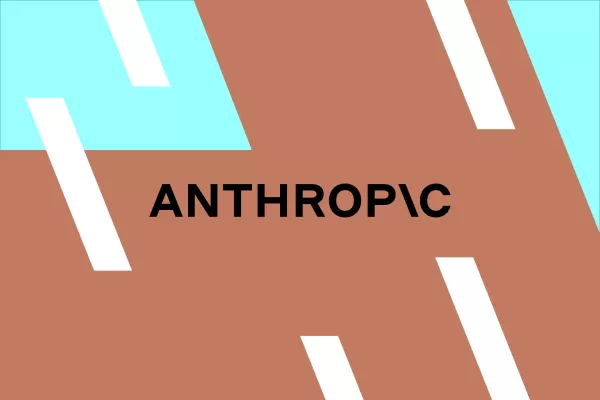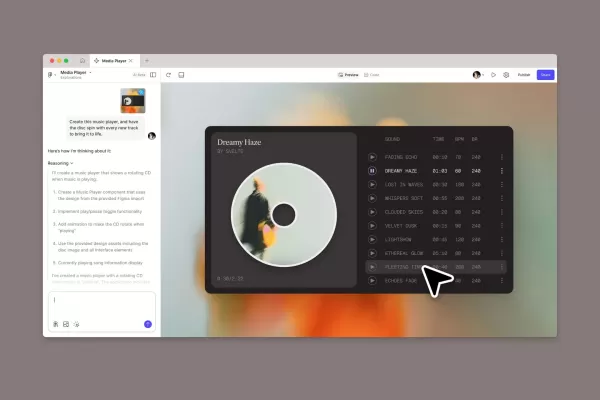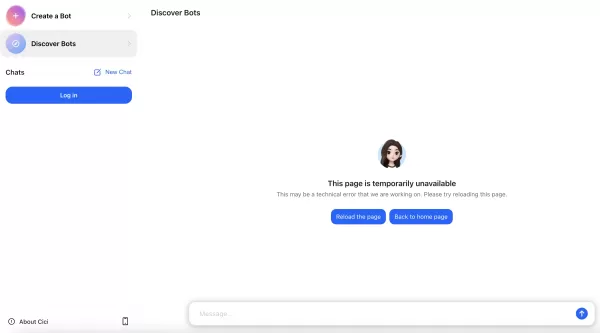Top 10 Python Libraries for Image Processing Revealed
In today's digital world, data reigns supreme for businesses, and a significant chunk of this data comes in the form of images. These images are goldmines of insights when processed by data scientists using machine learning (ML) models. It's like uncovering hidden treasures that can drive a business forward.
Image processing is all about turning images into digital formats and then using special techniques to extract valuable information from them. It's a bit like being a digital detective, piecing together clues from pixels.
There are several key types of image processing that businesses can leverage:
- Visualization: This technique helps in spotting objects that aren't immediately visible in the image. It's like turning on a special light to see what's hidden in the shadows.
- Recognition: Here, the focus is on identifying objects that are clearly present in the image. Think of it as calling out names at a crowded party.
- Sharpening and Restoration: This involves enhancing the original images to make them clearer and more detailed. It's like giving your images a spa day to look their best.
- Pattern Recognition: This method measures and identifies patterns within the image, which can be crucial for understanding trends or behaviors.
- Retrieval: This is all about finding images similar to a given image by searching through a vast database. It's like playing a high-tech game of "Where's Waldo?"
Once a business decides to dive into image processing, the applications are endless. For instance, in medical research, it can help in crafting precise treatment plans. It's also fantastic for fixing up corrupted image parts or performing face detection. It's like having a Swiss Army knife for your digital images.
To handle this deluge of data swiftly and effectively, data scientists turn to specialized image processing tools designed for machine learning and deep learning. Python, being a favorite among data scientists, hosts some of the best image processing libraries around.
Let's explore the top 10 image processing libraries in Python:
1. [OpenCV](https://opencv.org/)
Leading the pack is OpenCV, an open-source gem that Intel released back in 2000. It's the go-to for all sorts of computer vision tasks, from face detection to object recognition and beyond. Written in C++ but wrapped nicely for Python, OpenCV plays well with NumPy, SciPy, and Matplotlib. What's great is that it's constantly evolving, thanks to its vibrant community on GitHub.
With over 2,500 algorithms at your fingertips, you can do everything from removing red eyes to tracking eye movements. It's no wonder that big names like IBM, Google, and Toyota swear by it.
- Used by major companies like IBM, Google, and Toyota
- Algorithmic efficiency
- Vast access to algorithms
- Multiple interfaces
2. [Scikit-Image](https://scikit-image.org/)
Next up is Scikit-Image, another heavyweight in the image processing arena. It's versatile, tackling almost any computer vision task you throw at it. Partly written in Cython, which is essentially Python on steroids, it delivers impressive performance.
Scikit-Image treats images as NumPy arrays and offers a plethora of algorithms for everything from segmentation to feature detection. It's open source, easy to use, and has minimal legal and licensing hurdles, making it a favorite for real-world applications like predicting consumer behavior.
- Open source and easy to use
- Free with minimum legal and licensing restrictions
- Versatile
- Real-world applications like consumer behavior prediction
3. [SciPy](https://scipy.org/)
Originally crafted for mathematical and scientific computations, SciPy has carved out a niche in image processing as well. By importing the scipy.ndimage submodule, you can dive into multi-dimensional image processing.
It's perfect for tasks like image segmentation, convolution, and even face detection. SciPy is open source, offering high-level commands for data manipulation and visualization, and it's great for interactive Python sessions.
- High-level commands and classes for visualizing and manipulating data
- Open source
- Interactive sessions with Python
- Classes, web and database routines for parallel programming
4. [Mahotas](https://mahotas.readthedocs.io/en/latest/)
Mahotas is another top-notch library, initially designed for bioimage informatics. It's packed with advanced features like local binary patterns and haralick, and can handle both 2D and 3D images.
With over 100 functionalities for computer vision, including watershed and morphological processing, Mahotas is constantly evolving, adding new tricks up its sleeve.
- Over 100 functionalities for computer vision
- Advanced features
- Computes 2D and 3D images
- Constantly adding new functionalities
5. [Pillow/PIL](https://pillow.readthedocs.io/en/stable/)
Pillow, an advanced fork of the Python Imaging Library (PIL), is a go-to for many image processing tasks. It supports a wide range of image formats and is incredibly user-friendly, making it a staple for data scientists dealing with images.
From point operations to filtering and manipulating, Pillow has you covered. It's especially handy for augmenting training data for computer vision problems.
- Support for various image formats like JPEG and PNG
- Easy to use
- Various image processing methods
- Useful for augmenting training data for computer vision problems
6. [SimpleITK](https://simpleitk.org/)
SimpleITK takes a unique approach, treating images as points in a physical space rather than arrays. This perspective allows it to handle 2D, 3D, and even 4D images effectively.
It's particularly useful for image segmentation and registration, which involves aligning multiple images. SimpleITK's advanced programming features ensure performance, flexibility, and efficiency.
- Support for 2D and 3D images
- Advanced programming features that deliver performance, flexibility, and efficiency
- Image segmentation and image registration
- Considers images as set of points on physical region in space
7. [Matplotlib](https://matplotlib.org/)
Matplotlib is another versatile tool, mainly known for its prowess in 2D plotting but also quite handy for image processing. It includes specific methods for reading and displaying images and is built on top of NumPy arrays.
While it's commonly used for creating scatter plots, histograms, and bar graphs, it's also effective at pulling information out of images. Just remember, it doesn't support all file formats.
- Simple and easy to use
- Provides high-quality images and plots in various formats
- Open source
- Highly customizable
8. [NumPy](https://numpy.org/)
NumPy, primarily known for numerical analysis, also steps into the image processing arena. It's excellent for tasks like image cropping, pixel manipulation, and masking pixel values.
With its matrix and multi-dimensional arrays, NumPy can handle color reduction, binarization, and much more. Since images can be seen as arrays, NumPy becomes a powerful ally in processing them.
- Compact data storage
- High-speed processing of arrays
- Helps with many functionalities
- Data compatibility with other libraries
9. [Pgmagick](https://pypi.org/project/pgmagick/)
Pgmagick is a Python wrapper for the GraphicMagick library, offering a vast collection of tools for image editing and manipulation. It's open source and supports many image formats, making it a versatile choice for image processing tasks.
- Large collection of tools and libraries
- Image editing and image manipulation
- Supports many image formats
- Open source
10. [SimpleCV](http://simplecv.org/)
Rounding out our list is SimpleCV, a popular open-source framework for building computer vision applications. It offers a readable interface for everything from camera control to image manipulation and feature extraction.
SimpleCV makes it easy to tap into powerful computer vision libraries like OpenCV without getting bogged down in the nitty-gritty details of file formats and color spaces.
- Open source
- Readable interface
- Easily create computer vision tasks
- Access to high-powered computer vision libraries
Related article
 "Dot AI Companion App Announces Closure, Discontinues Personalized Service"
Dot, an AI companion application designed to function as a personal friend and confidant, will cease operations, according to a Friday announcement from its developers. New Computer, the startup behind Dot, stated on its website that the service will
"Dot AI Companion App Announces Closure, Discontinues Personalized Service"
Dot, an AI companion application designed to function as a personal friend and confidant, will cease operations, according to a Friday announcement from its developers. New Computer, the startup behind Dot, stated on its website that the service will
 Anthropic Resolves Legal Case Over AI-Generated Book Piracy
Anthropic has reached a resolution in a significant copyright dispute with US authors, agreeing to a proposed class action settlement that avoids a potentially costly trial. The agreement, filed in court documents this Tuesday, stems from allegations
Anthropic Resolves Legal Case Over AI-Generated Book Piracy
Anthropic has reached a resolution in a significant copyright dispute with US authors, agreeing to a proposed class action settlement that avoids a potentially costly trial. The agreement, filed in court documents this Tuesday, stems from allegations
 Figma Releases AI-Powered App Builder Tool to All Users
Figma Make, the innovative prompt-to-app development platform unveiled earlier this year, has officially exited beta and rolled out to all users. This groundbreaking tool joins the ranks of AI-powered coding assistants like Google's Gemini Code Assis
Comments (15)
0/200
Figma Releases AI-Powered App Builder Tool to All Users
Figma Make, the innovative prompt-to-app development platform unveiled earlier this year, has officially exited beta and rolled out to all users. This groundbreaking tool joins the ranks of AI-powered coding assistants like Google's Gemini Code Assis
Comments (15)
0/200
![PeterMartinez]() PeterMartinez
PeterMartinez
 September 1, 2025 at 12:30:34 PM EDT
September 1, 2025 at 12:30:34 PM EDT
Finalmente alguém compilou as melhores bibliotecas de processamento de imagens em Python! Já usei algumas delas, mas sempre fico na dúvida se estou usando a melhor opção para cada projeto. Será que OpenCV continua sendo o rei nesse ramo? 👀


 0
0
![JustinHarris]() JustinHarris
JustinHarris
 August 25, 2025 at 5:47:02 AM EDT
August 25, 2025 at 5:47:02 AM EDT
This article on Python libraries for image processing is super insightful! I had no idea there were so many powerful tools out there for handling images in ML. Definitely gonna play around with some of these libraries for my next project! 😎


 0
0
![GregoryRodriguez]() GregoryRodriguez
GregoryRodriguez
 August 24, 2025 at 3:01:24 PM EDT
August 24, 2025 at 3:01:24 PM EDT
Wow, this article on Python libraries for image processing is a game-changer! I'm excited to try out these tools for my ML projects. Any tips on which library is best for real-time image analysis? 😎


 0
0
![JosephGreen]() JosephGreen
JosephGreen
 July 30, 2025 at 9:41:19 PM EDT
July 30, 2025 at 9:41:19 PM EDT
This article is a gem! 😍 Those Python libraries sound like magic wands for image processing. I’m curious, which one’s best for real-time applications? Gotta dive into this treasure chest of tools!


 0
0
![KevinMartinez]() KevinMartinez
KevinMartinez
 July 27, 2025 at 9:20:21 PM EDT
July 27, 2025 at 9:20:21 PM EDT
This article on Python image processing libraries is super insightful! 😍 I had no idea how powerful these tools are for unlocking data from images. Definitely gonna try some for my next ML project!


 0
0
![EricRoberts]() EricRoberts
EricRoberts
 April 16, 2025 at 1:01:38 AM EDT
April 16, 2025 at 1:01:38 AM EDT
画像処理用のPythonライブラリは宝の山です!いくつか使ってみましたが、プロジェクトがとても簡単になりました。ただ、セットアップが少し難しいものもあります。それでも、データサイエンティストには必須ですね!😎


 0
0
In today's digital world, data reigns supreme for businesses, and a significant chunk of this data comes in the form of images. These images are goldmines of insights when processed by data scientists using machine learning (ML) models. It's like uncovering hidden treasures that can drive a business forward.
Image processing is all about turning images into digital formats and then using special techniques to extract valuable information from them. It's a bit like being a digital detective, piecing together clues from pixels.
There are several key types of image processing that businesses can leverage:
- Visualization: This technique helps in spotting objects that aren't immediately visible in the image. It's like turning on a special light to see what's hidden in the shadows.
- Recognition: Here, the focus is on identifying objects that are clearly present in the image. Think of it as calling out names at a crowded party.
- Sharpening and Restoration: This involves enhancing the original images to make them clearer and more detailed. It's like giving your images a spa day to look their best.
- Pattern Recognition: This method measures and identifies patterns within the image, which can be crucial for understanding trends or behaviors.
- Retrieval: This is all about finding images similar to a given image by searching through a vast database. It's like playing a high-tech game of "Where's Waldo?"
Once a business decides to dive into image processing, the applications are endless. For instance, in medical research, it can help in crafting precise treatment plans. It's also fantastic for fixing up corrupted image parts or performing face detection. It's like having a Swiss Army knife for your digital images.
To handle this deluge of data swiftly and effectively, data scientists turn to specialized image processing tools designed for machine learning and deep learning. Python, being a favorite among data scientists, hosts some of the best image processing libraries around.
Let's explore the top 10 image processing libraries in Python:
1. [OpenCV](https://opencv.org/)
Leading the pack is OpenCV, an open-source gem that Intel released back in 2000. It's the go-to for all sorts of computer vision tasks, from face detection to object recognition and beyond. Written in C++ but wrapped nicely for Python, OpenCV plays well with NumPy, SciPy, and Matplotlib. What's great is that it's constantly evolving, thanks to its vibrant community on GitHub.
With over 2,500 algorithms at your fingertips, you can do everything from removing red eyes to tracking eye movements. It's no wonder that big names like IBM, Google, and Toyota swear by it.
- Used by major companies like IBM, Google, and Toyota
- Algorithmic efficiency
- Vast access to algorithms
- Multiple interfaces
2. [Scikit-Image](https://scikit-image.org/)
Next up is Scikit-Image, another heavyweight in the image processing arena. It's versatile, tackling almost any computer vision task you throw at it. Partly written in Cython, which is essentially Python on steroids, it delivers impressive performance.
Scikit-Image treats images as NumPy arrays and offers a plethora of algorithms for everything from segmentation to feature detection. It's open source, easy to use, and has minimal legal and licensing hurdles, making it a favorite for real-world applications like predicting consumer behavior.
- Open source and easy to use
- Free with minimum legal and licensing restrictions
- Versatile
- Real-world applications like consumer behavior prediction
3. [SciPy](https://scipy.org/)
Originally crafted for mathematical and scientific computations, SciPy has carved out a niche in image processing as well. By importing the scipy.ndimage submodule, you can dive into multi-dimensional image processing.
It's perfect for tasks like image segmentation, convolution, and even face detection. SciPy is open source, offering high-level commands for data manipulation and visualization, and it's great for interactive Python sessions.
- High-level commands and classes for visualizing and manipulating data
- Open source
- Interactive sessions with Python
- Classes, web and database routines for parallel programming
4. [Mahotas](https://mahotas.readthedocs.io/en/latest/)
Mahotas is another top-notch library, initially designed for bioimage informatics. It's packed with advanced features like local binary patterns and haralick, and can handle both 2D and 3D images.
With over 100 functionalities for computer vision, including watershed and morphological processing, Mahotas is constantly evolving, adding new tricks up its sleeve.
- Over 100 functionalities for computer vision
- Advanced features
- Computes 2D and 3D images
- Constantly adding new functionalities
5. [Pillow/PIL](https://pillow.readthedocs.io/en/stable/)
Pillow, an advanced fork of the Python Imaging Library (PIL), is a go-to for many image processing tasks. It supports a wide range of image formats and is incredibly user-friendly, making it a staple for data scientists dealing with images.
From point operations to filtering and manipulating, Pillow has you covered. It's especially handy for augmenting training data for computer vision problems.
- Support for various image formats like JPEG and PNG
- Easy to use
- Various image processing methods
- Useful for augmenting training data for computer vision problems
6. [SimpleITK](https://simpleitk.org/)
SimpleITK takes a unique approach, treating images as points in a physical space rather than arrays. This perspective allows it to handle 2D, 3D, and even 4D images effectively.
It's particularly useful for image segmentation and registration, which involves aligning multiple images. SimpleITK's advanced programming features ensure performance, flexibility, and efficiency.
- Support for 2D and 3D images
- Advanced programming features that deliver performance, flexibility, and efficiency
- Image segmentation and image registration
- Considers images as set of points on physical region in space
7. [Matplotlib](https://matplotlib.org/)
Matplotlib is another versatile tool, mainly known for its prowess in 2D plotting but also quite handy for image processing. It includes specific methods for reading and displaying images and is built on top of NumPy arrays.
While it's commonly used for creating scatter plots, histograms, and bar graphs, it's also effective at pulling information out of images. Just remember, it doesn't support all file formats.
- Simple and easy to use
- Provides high-quality images and plots in various formats
- Open source
- Highly customizable
8. [NumPy](https://numpy.org/)
NumPy, primarily known for numerical analysis, also steps into the image processing arena. It's excellent for tasks like image cropping, pixel manipulation, and masking pixel values.
With its matrix and multi-dimensional arrays, NumPy can handle color reduction, binarization, and much more. Since images can be seen as arrays, NumPy becomes a powerful ally in processing them.
- Compact data storage
- High-speed processing of arrays
- Helps with many functionalities
- Data compatibility with other libraries
9. [Pgmagick](https://pypi.org/project/pgmagick/)
Pgmagick is a Python wrapper for the GraphicMagick library, offering a vast collection of tools for image editing and manipulation. It's open source and supports many image formats, making it a versatile choice for image processing tasks.
- Large collection of tools and libraries
- Image editing and image manipulation
- Supports many image formats
- Open source
10. [SimpleCV](http://simplecv.org/)
Rounding out our list is SimpleCV, a popular open-source framework for building computer vision applications. It offers a readable interface for everything from camera control to image manipulation and feature extraction.
SimpleCV makes it easy to tap into powerful computer vision libraries like OpenCV without getting bogged down in the nitty-gritty details of file formats and color spaces.
- Open source
- Readable interface
- Easily create computer vision tasks
- Access to high-powered computer vision libraries
 Anthropic Resolves Legal Case Over AI-Generated Book Piracy
Anthropic has reached a resolution in a significant copyright dispute with US authors, agreeing to a proposed class action settlement that avoids a potentially costly trial. The agreement, filed in court documents this Tuesday, stems from allegations
Anthropic Resolves Legal Case Over AI-Generated Book Piracy
Anthropic has reached a resolution in a significant copyright dispute with US authors, agreeing to a proposed class action settlement that avoids a potentially costly trial. The agreement, filed in court documents this Tuesday, stems from allegations
 Figma Releases AI-Powered App Builder Tool to All Users
Figma Make, the innovative prompt-to-app development platform unveiled earlier this year, has officially exited beta and rolled out to all users. This groundbreaking tool joins the ranks of AI-powered coding assistants like Google's Gemini Code Assis
Figma Releases AI-Powered App Builder Tool to All Users
Figma Make, the innovative prompt-to-app development platform unveiled earlier this year, has officially exited beta and rolled out to all users. This groundbreaking tool joins the ranks of AI-powered coding assistants like Google's Gemini Code Assis
 September 1, 2025 at 12:30:34 PM EDT
September 1, 2025 at 12:30:34 PM EDT
Finalmente alguém compilou as melhores bibliotecas de processamento de imagens em Python! Já usei algumas delas, mas sempre fico na dúvida se estou usando a melhor opção para cada projeto. Será que OpenCV continua sendo o rei nesse ramo? 👀


 0
0
 August 25, 2025 at 5:47:02 AM EDT
August 25, 2025 at 5:47:02 AM EDT
This article on Python libraries for image processing is super insightful! I had no idea there were so many powerful tools out there for handling images in ML. Definitely gonna play around with some of these libraries for my next project! 😎


 0
0
 August 24, 2025 at 3:01:24 PM EDT
August 24, 2025 at 3:01:24 PM EDT
Wow, this article on Python libraries for image processing is a game-changer! I'm excited to try out these tools for my ML projects. Any tips on which library is best for real-time image analysis? 😎


 0
0
 July 30, 2025 at 9:41:19 PM EDT
July 30, 2025 at 9:41:19 PM EDT
This article is a gem! 😍 Those Python libraries sound like magic wands for image processing. I’m curious, which one’s best for real-time applications? Gotta dive into this treasure chest of tools!


 0
0
 July 27, 2025 at 9:20:21 PM EDT
July 27, 2025 at 9:20:21 PM EDT
This article on Python image processing libraries is super insightful! 😍 I had no idea how powerful these tools are for unlocking data from images. Definitely gonna try some for my next ML project!


 0
0
 April 16, 2025 at 1:01:38 AM EDT
April 16, 2025 at 1:01:38 AM EDT
画像処理用のPythonライブラリは宝の山です!いくつか使ってみましたが、プロジェクトがとても簡単になりました。ただ、セットアップが少し難しいものもあります。それでも、データサイエンティストには必須ですね!😎


 0
0





























